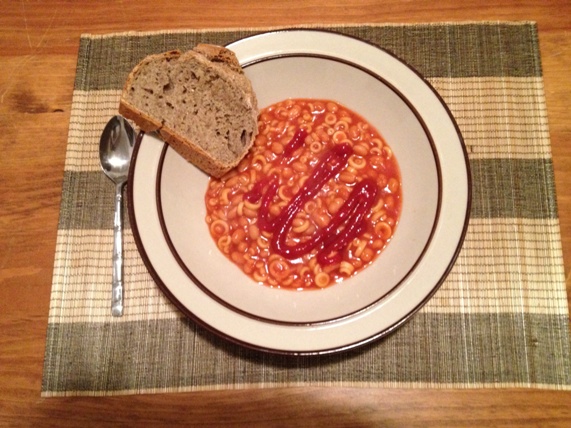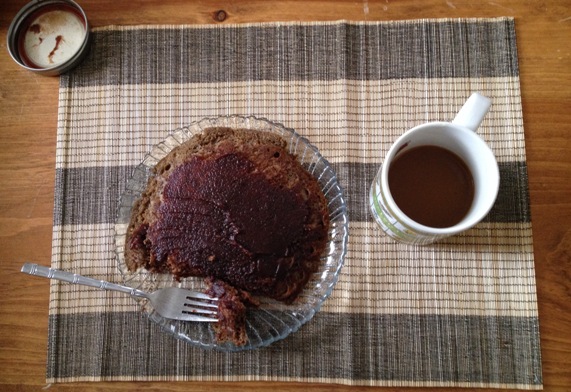January 1, 2014 -- I want to wish each of you a Happy New Year and send my best for an excellent 2014.
As you know, I began this blog mostly as a way to write and journal about what has become a dedicated year to learning about Ernest Hemingway. To borrow a phrase from another Hemingway blogger, like others who began such a thing on EH my love of Hemingway began as an interest, turned into a passion, and is now an obsession.
First, let me say that My Year did not really begin until late March, with my journey and second post here entitled "Middle Aged Man and the Sea," and will not end at least until my wife and I travel to Paris this summer, technically taking more than a year. But - hey - it is now an obsession, right, so who is counting?
Secondly, let me say I wish I were a better blogger. I may have stranded some of you in the middle of Pamplona and "The Sun Also Rises" -- my last post. Unfortunately, the crash of Christmas deadlines, my full time business and side line businesses, as well as keeping my promise to totally redecorate my daughter's bathroom this past month, have kept me away. I so envy those bloggers I follow who actually have the time and the discipline to write every day. I promise to return us to Pamplona soon and pick up where we left off, if you are still interested anyway.
Anyway, it was a busy year, 2013. So allow me to take this moment to reflect and post an accounting, of sorts, on where I have come in my Hemingway journey:
March -- Caught a 7 1/2 foot Sailfish off the coast of Florida, along with 6 other sailfish and dolphin fish, after completing "Hemingway on Fishing" the night before, including a re-reading of The Old Man and the Sea";
April -- Visited Hemingway friend F Scot Fitzgerald and Zelda Fitzgerald's home in Birmingham;
May -- Second visit to the Hemingway-Pfeiffer Home in Piggott, where my last minute stop a year earlier had let to the beginning of this whole fascination with Papa.
June -- Went trout fishing, Hemingway style, in Cotter, Arkansas, while reading "Big-Two-Hearted River"
July -- Oh July. What a month:
-Visited the South of France, Provence, and saw the 100th Anniversary of the Tour de France;
-Visited Barcelona and drank absinthe in Hemingway's favorite bar there, the Bar Marcella, which invented the drink and has purposely not changed at all since he was there, literally (never once dusted);
-Visited the museums of some of Hemingway's friends and colleagues, Picasso and Dali;
- Traveled through the Pyrenees and stayed in the Hostel Burquette in Ernest Hemingway's actual room and reenacted scenes from "The Sun Also Rises";
- Pamplona -- Oh man. The Fiesta. Ran with the Bulls, attended my first Bull Fights, drank at the Cafe Iruna while re-reading "The Sun Also Rises" and hitting his favorite bars and locations;
- Met and befriended John Hemingway and his son Michael (grandson and great grandson of Papa), and made a lot of other great new friends with the Pamplona Posse, a group of expats -- including John -- who run together and hang out at the Fiesta all week. Drew got to run with John as well. Thank you John for some great memories! John wrote "Strange Tribe" and is a noted writer in his own right. He signed my book and also gave me directions to the place that held my tickets which was a life saver... see future blog.
- Drove to Madrid from Pamplona, crossing much of the area involved in "For Whom the Bell Tolls"
- Madrid -- Stayed in one of Hemingway's favorite hotels, visited his favorite Art Museum, the Prado, and gazed at his favorite painting (of a woman, of course, lol); drank a martini at one of his favorite bars at the Palace Hotel and ate his favorite meal, Roast Sucking Pig, at the same restaurant featured in the last scene of "The Sun Also Rises". Also walked around to some of his favorite places during the Spanish Civil War. I wish I had had more time in Madrid;
- Africa -- Flew into Arusha, Tanzania and went on Safari (not the hunting kind) in the Serengeti, around Mt. Kilimanjaro and Moshi, Lake Manyara, the Ngororo Crater, and the Rift Valley, all places prominently featured in the various safari stories and books of Ernest Hemingway. We even got to stop and see the indigenous tribes of the Masai. Did this while reading "The Green Hills of Africa."
- Mt. Kilimanjaro -- My son and I spent a week climbing and finally summitting Mt Kilimanjaro. Played with the snow, or slushy ice anyway, on top of Kili. A great way to end a great trip.
August -- Contracted malaria in Africa but it lay dormant until shortly after my return. I felt like death, not unlike the main character (whoops, person, sorry Hem) in his short story entitled "The Snows of Mount Kilimanjaro."
October -- Attended my first meeting as a member of the Hemingway-Pfeiffer Home and Museum board in Piggott. Excited about the prospects of working with this important place in his life.
-- Grew a mustache and went to Holloween party with my wife as Hem dressed up in Pamplona gear, and Sissy went as Zelda;
November -- Purchased a Life Magazine's first printing copy that included the first publication for the public of "The Old Man and the Sea"; Saved my "Hemingway Mustache" at the end of "Movember" but raised money for testicular research. A good thing.
As for reading, which is after-all what a Hemingway obsession should be about... well - I have been busy in 2013. I made a New Year's Resolution to read all of Papa's works. He was, of course, a very dedicated, prolific and disciplined writer, so I did not really make this goal. However, I did read or re-read every major work published during his life-time, saving those works published after his death for 2014. Here is what I read this year, including other works about Hemingway as well, beginning with the original inspiration, of course:
List of Readings for 2013
"Unbelievable Happiness and Final Sorrow" by Dr. Ruth A Hawkins
"Hemingway on Fishing" a collection of works -- Ernest Hemingway
"The Old Man and the Sea" -- EH, 1952
" A Farewell to Arms" -- EH, 1929
"The Sun Also Rises" -- EH, 1926
"The Big-Two Hearted River" -- EH, 1926
"Death in the Afternoon" == EH, 1932
"For Whom the Bell Tolls" -- EH, 1940
"The Snows of Kilimanjaro and other Short Stories" -- EH, 1936
"Strange Tribe" -- John Hemingway, 2013
"The Green Hills of Africa" -- EH, 1935
"The Short, Happy Life of Francis Macomber" -- EH, 1936
"The Torrents of Spring," EH, 1926
"In Our Time," 1923
"Hills Like White Elephants," 1927
"Indian Camp," EH, 1925
"A Day's Wait," EH, 1933
"Men Without Women," EH, 1927
"Winner Take Nothing,"EH, 1933
"The Fifth Column and the First Forty Nine Stories," EH, 1938
"To Have and to Have Not," EH, 1944
Other Short Story Collections of Short Stories Published During His Life
"The Paris Wife," 2013, Paula McClean (fictional account of marriage to Hadley)
"Paris Without End: The True Story of Hemingway's First Wife," 2011, Gloria Diliberto
"Hemingway and Gellhorn: The Untold Story of Two Writers, Espionage, War, and the Great Depression, 2011?, Jerome Tuccille
"Hemingway's Paris," 1978, Robert E Gajdusek
and Finally, as of today:
"Across the River and into the Trees," EH, 1950
I also watched several of the famous works above in the movie adaptations, as well as documentaries, including "This Spanish Earth" narrated by EH and available on NetFlix
"The Hemingway Project" is my favorite Hemingway Blog, and Wishes of Good Health Goes to my new social media friend Allie Baker who is the genius behind this site. May she live long and continue to blog about our favorite person.
2014
All of his Published Works After His Death
Can I figure out a way to go to Cuba, his boyhood stomping grounds in Chicago and Michigan, his final resting place in Ketchum, and also Paris, where my wife and I will be celebrating our 25th Anniversary this summer. Stay Tuned... it should be fun.
Finally, I want to make this important note. Thank you to Ernest Hemingway, for your inspiration, for your craft, for your incredible literary legacy and gift to us all, and for watching from above when you put that amazing fish on my line in Florida, when you ran beside me and pulled me away from that Bull inside the Bullring in Pamplona, for introducing me to your Grandson (and making sure he appeared out of nowhere in the square to help me find my way, now that was strange) and of course, on that last summit night on the snows of Kilimanjaro. I could feel your presence as if a Guardian Angel were there. How do I know it was you? Who else would have put all those amazing fish on my line on what turned out to be the only good fishing day in 60 days?
Not just any angel would bother.











.jpg)
.jpg)























